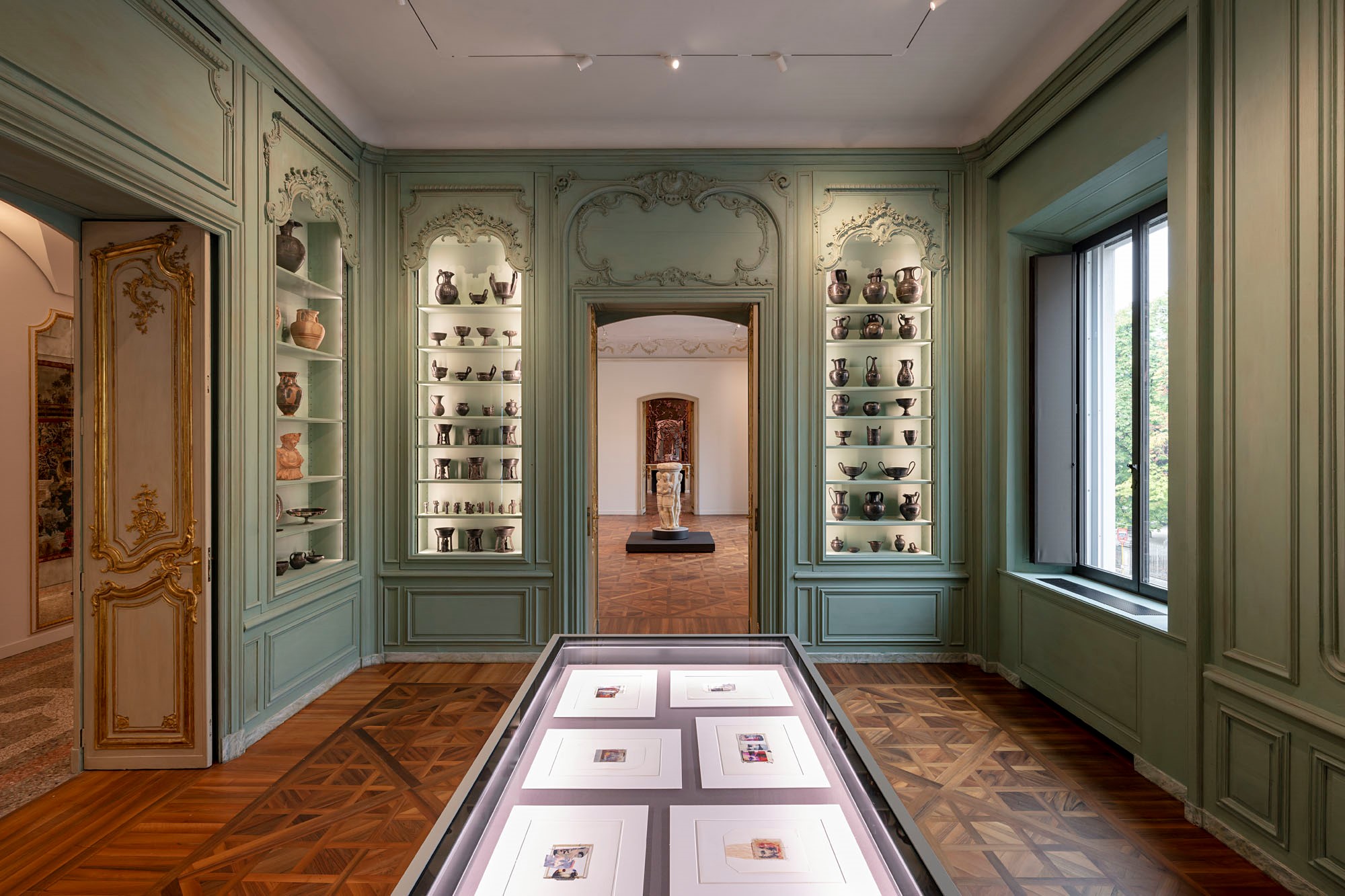A new artistic and architectural gem is added to the Milanese museum offer: the Luigi Rovati Foundation opens in Milan, whose art museum houses a precious collection of Etruscan art
After a masterful redevelopment entrusted to the MCA Mario Cucinella Architects studio that lasted 6 years, the Luigi Rovati Foundation opened in Milan in September, dedicating an entire month of free visits to the citizens.
An inauguration very much in line with the Foundation’s founding values of promoting access to knowledge and culture by overcoming physical, cultural and social barriers.

After walking along the neoclassical Corso Venezia, overlooked by the splendid palaces of the nobility and rich 19th-century Milanese bourgeoisie, we enter the Art Museum.
We are welcomed by a building built at the behest of the Prince of Piombino in 1871 and only arrived at the Foundation in 2016 after various changes of ownership and a substantial restoration by Ferdinando Reggiori and Filippo Perego in 1958.
Access takes place through a delightful atrium, which serves as a distribution space between the entrance to the Foundation itself, the bistro and restaurant entrusted to the expert hands of the Campania chef Andrea Aprea and a sustainable pocket garden – designed by the architect landscape architect Marilena Baggio – sheltered from city traffic, in whose pavilion temporary exhibitions will be hosted.

We begin our journey of discovery of the collection from the underground room.
Two domes and a large ellipsoidal hall whose geometries and volumes recall the Etruscan mounds, in particular the tombs of Cerveteri.
More than 200 finds on display including ceramics, bronzes and gold from the Etruscan collection combined with modern and contemporary works of art, to which are added the temporary exhibitions set up within the permanent exhibition itinerary.

All of this, masterfully set up and illuminated, in the architectural frame of domes of Florentine pietra forte ashlars, offers an immersive experience of exceptional vigor.
The visit continues on the noble floor, which maintains the original style and the boiserie introduced by the restoration by Filippo Perego in the mid-1900s, but transfigures them into a riot of light and colour. The luminous layout of the noble floor is in clear antithesis with the shadows and the play of light of the underground room and yet the artistic dialogue appears uninterrupted and harmonious, a deliberately global emotional experience, where the light, the volumes and the colors of the container become essential parts of the visit.
Works by de Chirico and Warhol, Diego and Alberto Giacometti, Picasso and Arturo Martini, to name just a few of the masters represented, alternate with masterpieces of the goldsmith’s art, small bronzes, stele and Etruscan vases in an astonishing “narrative continuum in the dialogue by opposition or contiguity between ancient and contemporary” as explained by the president of the Giovanna Forlanelli Foundation.

The Foundation, which, as mentioned, promotes access to knowledge and culture by overcoming physical, cultural and social barriers, collaborates with professionals, associations and non-profit organizations to develop paths and tools that facilitate access to spaces and the relationship with the works.
In particular, a facilitated guide will soon be created, available to visitors with intellectual disabilities, created by Museo per Tutti, a project conceived by the Association L’Abilità Onlus with the support of the De Agostini Foundation.
The museum itinerary will also be accessible to people with visual impairments, with 3D reproductions of a series of exhibits and a guide in Braille, thanks to a project in collaboration with the Istituto dei Ciechi of Milan.
The offer of new spaces for multidisciplinary dialogue is one of the goals of the Foundation which wants to offer the city a place for research, experimentation and knowledge in line with the key values of promotion and support for the diffusion of culture.

We want to conclude our journey inside the Rovati Foundation Art Museum with the words of Mario Cucinella which effectively summarize its mission:
Architecture and art are a form of care, they enter inside us, create emotions , imaginations and memories. It’s a way of taking care of people and this attention is the most genuine expression of sustainability
[the_ad_placement id=”manual-placement”]
